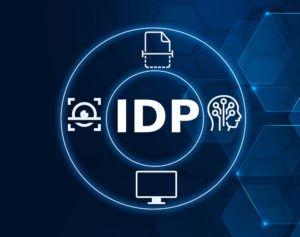In today’s fast-evolving technology landscape, artificial intelligence (AI) has emerged as a transformative force, reshaping industries and pushing the boundaries of innovation. Quocirca’s latest AI study reveals that 70% of organisations are using some form of AI, with 39% already using generative AI. Xerox, a global technology vendor, is at the forefront of this technological revolution in the print industry, leveraging AI to drive innovation across its portfolio.
A new era at Xerox
Xerox recently announced a new operating model with significant implications for its digital services. The new operating model establishes a dedicated ‘IT and Digital Services’ unit, signalling renewed focus on these emerging areas. This prioritisation aims to accelerate revenue diversification towards markets with higher growth potential than Xerox’s traditional print business. Artificial intelligence (AI) is a key technology that Xerox has been applying to drive innovation within its own business, as well as its product and service offerings.
A strong heritage in innovation
Dating back to the invention of xerography in 1938 by Chester Carlson, Xerox has a long history of innovation, playing a pivotal role in revolutionising office automation technology. The introduction of the Xerox 914 in 1959 enabled rapid reproduction of documents, previously a laborious and time-consuming process, and marked a turning point in office productivity and efficiency. Xerox Technology Group (XTG) and the Palo Alto Research Center (PARC) largely defined computing and offices as we know them today.
Xerox set out an agenda for AI as far back as 2017 and has used AI in many of its hardware and software products since then. The company continues to shape the future of work with innovative workplace technology, helping businesses streamline workflows, improve collaboration, and enhance productivity. Now, in the era of AI-enabled hybrid work, Xerox is addressing the growing demand for technologies that enable effective remote work and collaboration, developing new AI-powered solutions that help organisations deal with day-to-day tasks and information flows more efficiently and effectively.
As discussed in the recent Quocirca podcast, Xerox believes AI will be central to the strong growth it anticipates in its Digital Services division. In this podcast, Stephen Miller, Chief Digital Officer at Xerox, said, ‘Next year is really going to be all about realising high value in gen AI and AI use cases as part of our digital services growth strategy.’
Enhancing customer service
Xerox has been using ChatGPT in an omnichannel virtual assistant to interpret the sentiment and intent of customer requests, which enables the assistant to quickly answer questions or escalate them to human agents when necessary. This solution is deployed in North America and integrated with ticketing tools for service desks, supply ordering systems, and order-to-cash query management tools to provide fast problem resolution and responses to customer inquiries. Xerox is using its knowledge bases to build large language models that help ensure a higher degree of integrity over the accuracy and security of responses.
Harnessing AI-driven analytics
Xerox has a mature analytics offering to help managed print service (MPS) clients gain deeper insight into their print and scan infrastructure. It uses analytics to identify inefficiencies, simplify processes, and improve workflow automation. For instance, analytics can help companies understand user behaviours, identify non-essential printing, ensure compliance with policies, and target document-intensive processes.
Analytics that leverage AI are also used to deliver predictive support, supplies, and maintenance, reducing downtime and wasted replacement of parts. In addition, Xerox uses analytics in its MPS offering to monitor and manage printer fleet security.
AI-enabled intelligent document processing
Intelligent Document Processing (IDP), part of Xerox’s Capture and Content Services, is a suite of AI-powered technologies aimed at helping businesses automate and streamline their document processing workflows. IDP can extract, classify, and transform data from a variety of sources, including scanned typed and handwritten documents, scanned pictures, emails, and other digitised sources.
Through intelligent pattern matching and machine learning that require no human input, IDP automates workflows, makes predictive outputs, and improves the accuracy of information flows. It can also generate reports, alerts, and other insights from the data. The solution can process high volumes of complex and unstructured documents, including handwritten data. Xerox is seeing adoption among customers that are heavily dependent on paper-based processes and deal with large volumes of unstructured data, particularly in the legal, fintech, manufacturing, and hospitality industries.
Xerox also has a robotic process automation (RPA) offering to help businesses automate repetitive tasks and processes. Workflows that currently rely on paper and people can be fully automated with ease.
Harnessing AI for service innovation
Through augmented reality (AR) and AI, Xerox CareAR provides live visual remote assistance and guidance support to field technicians on customer sites. This enables them to diagnose an issue more accurately, and also helps minimise costly dispatches and drives faster resolutions with time-sensitive issues.
CareAR leverages AI in several ways to enhance its functionality and improve problem recognition and diagnosis. For instance, AI algorithms analyse the field of view captured by the customer’s or technician’s device, identifying the specific equipment or component involved in the service request.
This information is used to tailor the AR overlays and virtual expert guidance to the specific device or component. In addition, AI algorithms can analyse data from past service calls, technician feedback, and device specifications to recommend optimal solutions and maintenance practices. This data-driven approach helps improve service efficiency and reduce downtime, while also saving both Xerox and the customer time and money.
ConnectKey AI Apps
Xerox has developed a range of ConnectKey Apps that leverage AI to enhance productivity, efficiency, and creativity. Xerox Translate and Print uses neural machine translation to understand and interpret documents, translating from one language to another. Xerox Auto Redaction uses AI to locate and hide chosen words, numbers, terms, or phrases within scanned documents. Xerox Summarizer uses AI technology to analyse long documents, and then rewrite them with shorter text that conveys the most critical information from the original text.
The Xerox Note Converter app uses Google AI technology to transform handwritten notes into legible, editable, and shareable digital files. It can convert notes taken on various surfaces, including paper, whiteboards, and flip charts. Note Converter is also available on Xerox’s cloud-based Workflow Central platform.
Most recently, Xerox launched Intelligent Filer, which uses AI to not only automatically categorise documents, but also extract data to ensure correct and consistent naming policies, helping to reduce time in archiving and retrieving files.
AI-driven production job routing
Those in the production printing market require maximum efficiencies in preparing, routing, and managing print jobs. The Xerox FreeFlow Core, launched in 2013, simplifies complex pre-press and printing tasks by automating them. The software has customisable rules-based workflows that can be configured to automate manual tasks such as file preparation, pre-flighting, imposition, and proofing. It can change the printed output by adding CYMK+ embellishments without having to edit the original document. FreeFlow Core is vendor-agnostic and comes with a set of built-in accelerators to integrate with all printers, from standard presses to wide format. FreeFlow Core helps printers not only save on time-consuming, costly manual tasks, but also helps unleash new revenue streams, delivering better ROI for Xerox clients.
The future of AI innovation
Although the application of AI in the print industry is still in its early stages, Xerox is currently at the forefront because of the long history and breadth of AI capabilities across its business. As AI continues to evolve, collaboration will drive innovation in the industry. Quocirca expects to see broader partnerships to accelerate AI adoption and pave the way for more sophisticated, scalable AI applications in the industry.
Xerox’s new operating model shows a clear commitment to accelerating its digital transformation and leveraging its expertise in IT and digital services. AI is set to be integral to this opportunity and the potential impact on its digital services is promising, but success hinges on effective execution and navigating potential challenges.
Find out more in Quocirca’s In the Spotlight episode with Xerox.





